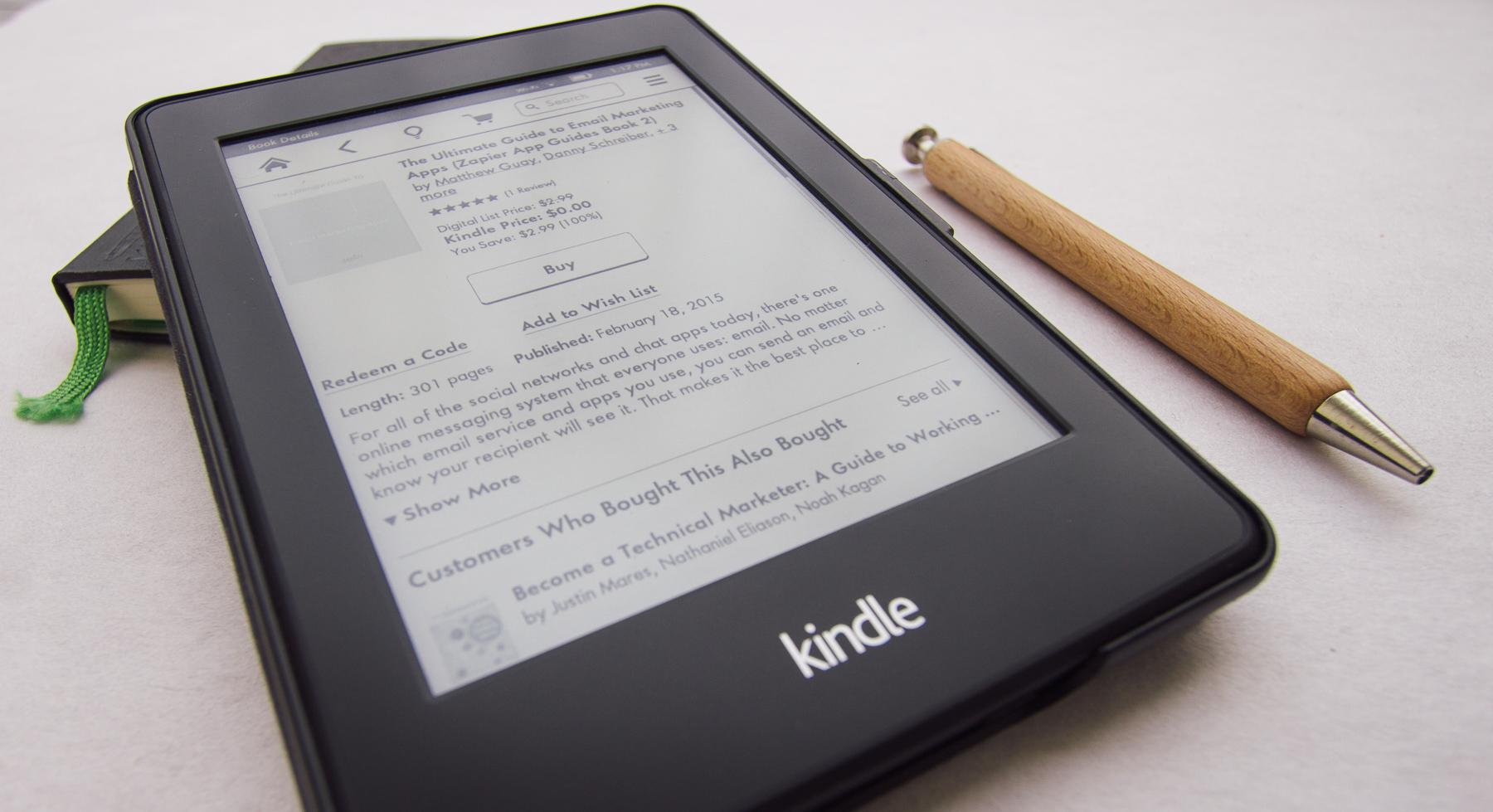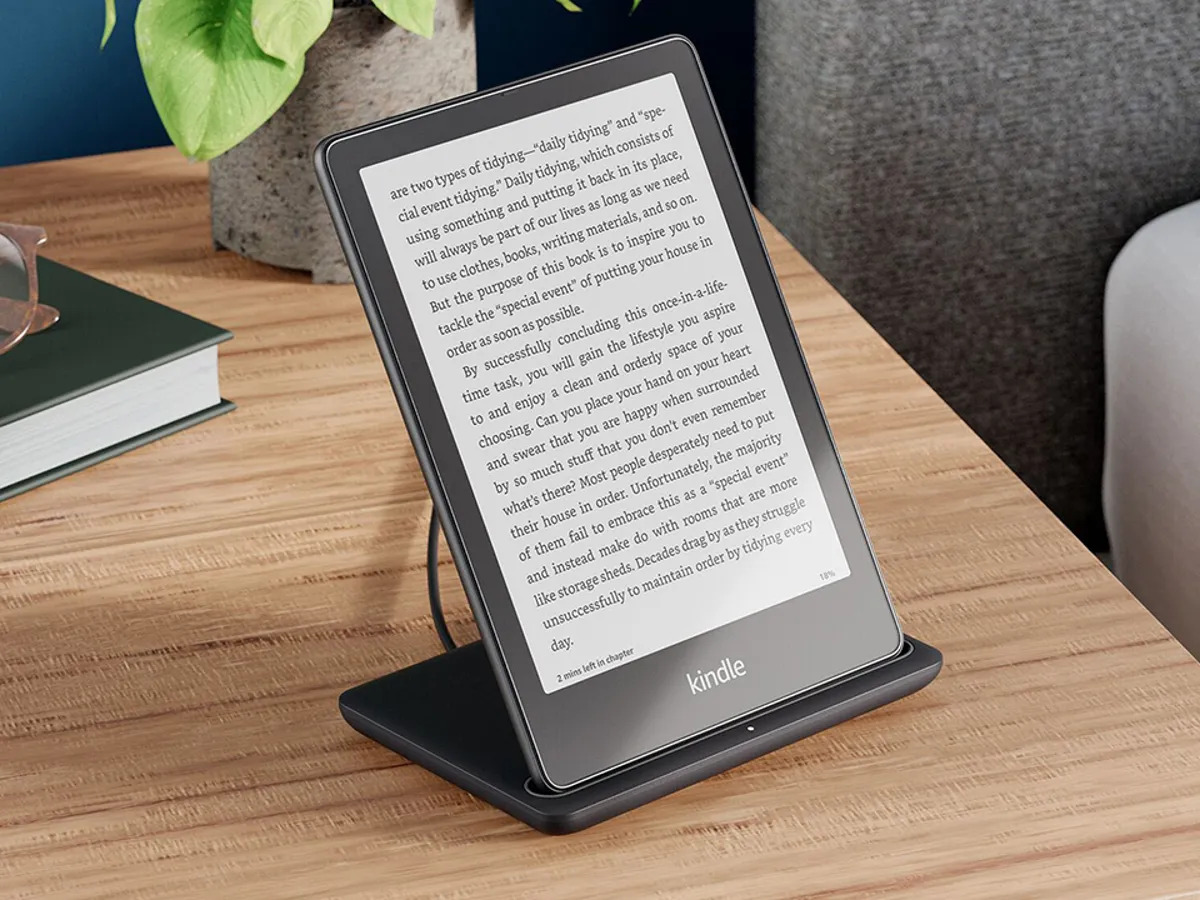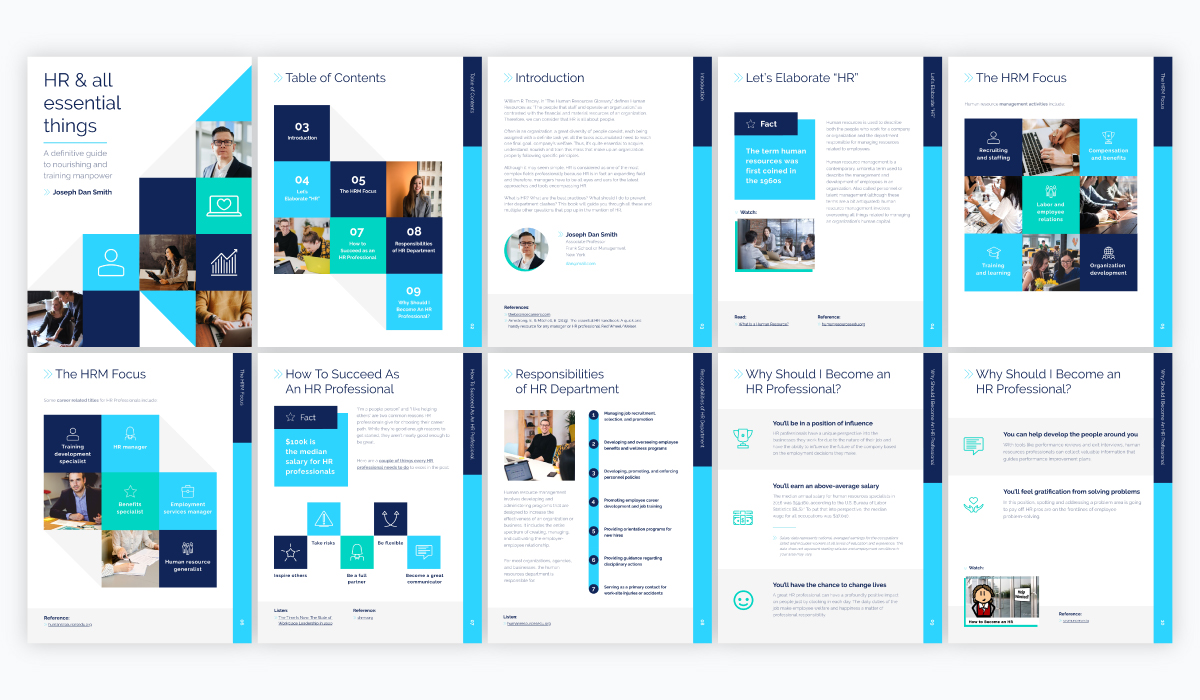Introduction
Welcome to the world of self-publishing! If you have written an eBook and want to share your work with a wider audience, putting it on Amazon can be a great choice. With millions of potential readers, Amazon provides an excellent platform for authors to publish and distribute their eBooks.
In this article, we will guide you through the process of putting your eBook on Amazon, step by step. Whether you’re an experienced writer or just starting out, this guide will help you navigate the Amazon Kindle Direct Publishing (KDP) platform and make your eBook available to readers worldwide.
Self-publishing on Amazon has become increasingly popular due to its ease of use and accessibility. It allows authors to reach a large audience without the need for a traditional publishing contract. Plus, you retain control over your content and can make updates or changes as needed.
So, if you’re ready to take the plunge and unleash your eBook on Amazon, let’s get started! We’ll cover everything from signing up for a KDP account to formatting your eBook and setting the price. Follow these steps, and soon your eBook will be available for readers to enjoy on their Kindle devices, smartphones, or tablets.
Before we begin, keep in mind that while Amazon provides an excellent platform to publish your eBook, success ultimately depends on factors like the quality of your writing, cover design, and marketing efforts. So, ensure you have a well-edited and engaging eBook, along with an aesthetically pleasing cover, to attract readers and increase your chances of success.
Now, let’s dive into the step-by-step process and put your eBook on Amazon for the world to discover.
Step 1: Sign up for an Amazon KDP Account
The first step to publish your eBook on Amazon is to sign up for an Amazon Kindle Direct Publishing (KDP) account. KDP is a user-friendly platform that allows authors to self-publish and distribute their eBooks to millions of readers across the globe.
To get started, visit the Amazon KDP website and click on the “Sign up” button. If you already have an Amazon account, you can use those login credentials. If not, you will need to create a new account by providing your name, email address, and creating a password. Make sure to read and agree to the terms and conditions before proceeding.
Once you’ve successfully signed in, you’ll be prompted to provide some additional information, such as your address and tax information. Amazon requires this information in order to process payments for your eBook sales and comply with tax regulations. Fill in the required fields accurately to ensure a smooth publishing process.
After completing these basic setup steps, you will gain access to your Amazon KDP dashboard. Here, you will find various tools and resources to help you manage and track the performance of your eBook. Take some time to familiarize yourself with the dashboard and explore the different features available.
One important aspect to note is the “KDP Select” program offered by Amazon. This program provides exclusive benefits to authors who agree to sell their eBook exclusively through Amazon for a certain period of time. While it limits your distribution options, it can offer additional promotional opportunities and potential for increased visibility among Amazon Prime subscribers. Consider the pros and cons of enrolling in the KDP Select program before making a decision.
Now that you have successfully signed up for an Amazon KDP account, you are one step closer to publishing your eBook on Amazon. In the next step, we will discuss how to format your eBook to meet the requirements of the platform.
Step 2: Format Your eBook
Formatting your eBook correctly is essential to ensure a smooth reading experience for your audience. Amazon has specific guidelines for eBook formatting, and adhering to these guidelines will make your eBook look professional and increase its chances of being accepted and enjoyed by readers.
Here are some key points to consider when formatting your eBook:
1. Choose the right file format: Amazon KDP accepts eBook files in various formats, including EPUB, MOBI, and PDF. While EPUB is the industry standard, Amazon prefers MOBI format for Kindle devices. You can convert your EPUB file to MOBI using free conversion tools like Calibre.
2. Structure your eBook: Organize your eBook into chapters, sections, and subheadings for easy navigation. Use consistent formatting, such as font size and style, throughout the entire document.
3. Add a cover image: A visually appealing cover is crucial for attracting readers. Create an eye-catching cover image with the appropriate dimensions (recommended size is 1,600 x 2,560 pixels) and save it as a separate image file. You can also use Amazon’s Cover Creator tool to design a professional-looking cover.
4. Proofread and edit: Thoroughly review your eBook for any grammatical or spelling errors. It’s always a good idea to have someone else proofread it as well to catch any mistakes you might have missed.
5. Format text: Use standard fonts (e.g., Arial, Times New Roman) and avoid decorative or complex fonts that may not display properly on all devices. Adjust the font size to ensure easy readability, and consider using bold or italics to emphasize important points.
6. Add images and graphics: If your eBook contains images or graphics, make sure they are high-quality and optimized for digital viewing. Resize images to fit the screen size of Kindle devices, and ensure they don’t compromise the overall file size of the eBook.
7. Table of contents: Include a table of contents (TOC) at the beginning of your eBook to help readers navigate easily. Amazon’s Kindle Previewer tool can automatically generate a TOC based on the headings in your document.
8. Convert to the appropriate format: After formatting your eBook according to the guidelines, convert it to the required format (MOBI or EPUB). Use free conversion tools like Calibre or Kindle Create to ensure compatibility with Amazon’s Kindle devices.
By following these formatting guidelines, you will optimize your eBook’s appearance and enhance the reading experience for your audience. In the next step, we will discuss how to create and set up your Amazon KDP bookshelf to organize your eBook properly.
Step 3: Create an Amazon KDP Bookshelf
Once you have signed up for an Amazon KDP account and formatted your eBook, the next step is to create an Amazon KDP bookshelf. The bookshelf is where you will manage all your eBooks and their associated details on the platform.
Here’s how to create your bookshelf:
1. Sign in to your Amazon KDP account: Visit the KDP website and log in using your Amazon account credentials. If you’re already signed in, you will be directed to your KDP dashboard.
2. Access your bookshelf: On your KDP dashboard, click on the ‘Create a new Kindle eBook‘ button or navigate to the ‘Bookshelf’ tab at the top of the page.
3. Add a new eBook: Click on the ‘Create a New Kindle eBook’ button to start setting up your eBook details. You will be prompted to provide information such as the title, author name, language, and ISBN (optional).
4. Enter eBook details: Fill in the required fields with accurate information about your eBook. This includes the book title, author name, series (if applicable), edition number, and publication date. You can also enter keywords that are relevant to your eBook to improve search visibility.
5. Set up categories and keywords: Select the appropriate categories and subcategories that best fit your eBook’s genre and topic. These categories help readers discover your eBook and ensure it appears in relevant search results. Additionally, enter relevant keywords to optimize your eBook’s discoverability.
6. Upload your cover image: Upload the cover image you created for your eBook. Ensure it meets Amazon’s specifications and looks professional to attract readers’ attention.
7. Add book description and author bio: Write a compelling book description that entices readers to learn more about your eBook. Use keywords strategically to improve search visibility. Additionally, provide an engaging author bio that builds trust and credibility with potential readers.
8. Save and publish: Once you have filled in all the necessary details, review everything carefully and click on the ‘Save and Publish’ button. Your eBook will go through a review process to ensure it meets Amazon’s guidelines. This process usually takes 24-72 hours.
Once your eBook passes the review process, it will be available for purchase on the Amazon Kindle Store. You can access and manage all your published eBooks from your bookshelf, making it convenient to track sales, update metadata, and make changes whenever needed.
With your bookshelf set up, you are now ready to upload your eBook file and move on to the next step. In the following section, we will discuss how to add your eBook details on Amazon KDP.
Step 4: Add Your eBook Details
Now that you have set up your Amazon KDP bookshelf, it’s time to add the necessary details about your eBook. These details will help potential readers find and understand your eBook better, increasing its chances of being discovered and purchased.
Here’s how to add your eBook details:
1. Access your bookshelf: Sign in to your Amazon KDP account and navigate to your bookshelf. Locate the eBook you want to add details for and click on the ‘Edit eBook Details’ button next to it.
2. Provide eBook title and subtitle: Enter the title and subtitle of your eBook. The title should accurately represent the content of your eBook and entice readers to click and learn more about it. If your eBook has a subtitle, add it as well to provide additional context.
3. Enter author name: Fill in the author name or names exactly as you want them to be displayed on the Amazon Kindle Store. This could be your own name or a pseudonym if you prefer to publish anonymously.
4. Set publication date: Enter the publication date of your eBook. If your eBook has already been published, enter the original publication date. If it’s a new release, use the current date or the date you plan to make it available for sale. The publication date helps readers understand the timeline of your eBook’s availability.
5. Select language and ISBN: Choose the primary language of your eBook from the available options. If you have an International Standard Book Number (ISBN) for your eBook, you can enter it in the provided field. An ISBN is not mandatory for eBooks, but it can be useful for tracking sales and ensuring your eBook is indexed correctly.
6. Add contributors: If there are additional contributors to your eBook, such as editors, illustrators, or translators, you can add their names in the “Contributors” section. This gives credit to everyone involved in the creation of your eBook.
7. Fill in description and keywords: Write an engaging and informative description of your eBook. Highlight what makes it unique or why readers should choose it. Use relevant keywords strategically throughout the description to help improve search visibility. Additionally, select up to seven keywords that accurately represent the content and genre of your eBook to enhance its discoverability.
8. Categorize your eBook: Choose the appropriate categories and subcategories for your eBook. These categories help readers find your eBook in the right browsing sections on the Amazon Kindle Store. Select the genres and subgenres that best match your eBook’s content and theme.
9. Save your changes: Review all the details you have entered and make any necessary adjustments. Once you are satisfied, click on the ‘Save and Continue’ button to save your changes. Your eBook details will be updated on the Amazon Kindle Store within 24-48 hours.
Adding accurate and compelling eBook details is crucial for attracting potential readers and increasing the discoverability of your eBook. Once you have entered all the necessary information, it’s time to upload your eBook file in the next step.
Step 5: Upload Your eBook File
Now that you have provided all the necessary details about your eBook, it’s time to upload the actual eBook file to Amazon KDP. Uploading the file correctly is crucial for ensuring that readers can access your content without any issues.
Follow these steps to upload your eBook file:
1. Access your bookshelf: Sign in to your Amazon KDP account and navigate to your bookshelf. Locate the eBook you want to upload the file for and click on the ‘Edit eBook Content’ button next to it.
2. Upload your eBook file: Click on the ‘Upload eBook Manuscript‘ button and choose the file from your computer. Make sure the file is in the correct format (MOBI or EPUB) and follows Amazon’s formatting guidelines.
3. Preview your eBook: After uploading the file, Amazon KDP will automatically convert it into a format compatible with Kindle devices. Use the ‘Preview’ option to review how your eBook looks on different devices and ensure there are no formatting issues. Make any necessary adjustments or corrections to the file if needed.
4. Check for errors: Amazon KDP provides an error checking tool that examines your eBook file for common formatting errors or issues. If any issues are detected, make the necessary changes in your original file and re-upload it until you receive a clean error report from Amazon.
5. Verify the book content: Carefully inspect the converted eBook to ensure that the content, images, and formatting match your original manuscript. Pay attention to the layout, paragraph breaks, headers, and footers to ensure they look as intended.
6. Save your changes: Once you are satisfied with the uploaded eBook file, click on the ‘Save and Continue’ button to save your changes. Your eBook file will now be processed and prepared for publication on the Amazon Kindle Store.
It’s important to note that the processing time for your eBook file may vary, but it typically takes 24-72 hours. During this time, Amazon will review the file and ensure it meets their quality standards and formatting guidelines. You can monitor the status of your eBook file in your KDP dashboard.
By following these steps and properly uploading your eBook file, you are one step closer to making your eBook available to readers worldwide. In the next step, we will discuss how to set the price and royalty options for your eBook.
Step 6: Set Your eBook Price and Royalty Options
Setting the price for your eBook is an important decision that affects its sales and profitability. Amazon KDP provides options to set your eBook price and choose royalty options that determine how much you will earn from each sale.
Follow these steps to set your eBook price and royalty options:
1. Access your bookshelf: Sign in to your Amazon KDP account and navigate to your bookshelf. Locate the eBook for which you want to set the price and click on the ‘Edit eBook Pricing’ button next to it.
2. Choose pricing options: Amazon KDP offers two main pricing options: Kindle eBook Pricing and Kindle MatchBook pricing. Kindle eBook Pricing allows you to set the price of your eBook independently, while Kindle MatchBook pricing offers a discounted price when customers buy the print book along with the eBook.
3. Select a pricing strategy: Decide on the pricing strategy that aligns with your goals and the value you believe your eBook provides. Consider factors such as market competition, genre, and your target audience when determining the price.
4. Set the list price: Enter the desired list price for your eBook. Keep in mind that Amazon may choose to discount your eBook at their discretion, based on factors such as competition and customer demand. Consider these potential discounts when setting your list price.
5. Choose royalty options: Amazon KDP offers two royalty options: 35% and 70%. The 35% royalty option applies to eBooks priced below $2.99 and certain other criteria, while the 70% royalty option applies to eBooks priced between $2.99 and $9.99 (sales made in specific Amazon marketplaces).
6. Consider the delivery cost: Depending on the file size of your eBook, Amazon may deduct a small delivery cost from each sale. This cost is based on the size of the eBook file and the customer’s location. Make sure to factor in this delivery cost when determining your desired royalty option.
7. Save your changes: Once you have set your desired price and chosen the appropriate royalty option, click on the ‘Save and Publish’ button to save your changes. Your eBook will be updated with the new pricing information within 24-48 hours.
It’s important to periodically review the performance of your eBook and adjust the price if necessary. Experiment with different price points and observe how they impact sales and reader engagement. Remember, finding the right balance between an attractive price for readers and a profitable income for yourself is key.
With your eBook price and royalty options set, you are almost ready to publish and share your work with readers around the world. In the next step, we will discuss how to choose territories and rights for your eBook.
Step 7: Choose Territories and Rights
Choosing the territories and rights for your eBook is an important step in the publishing process. Amazon KDP allows you to select where you want your eBook to be available for purchase and the rights you want to grant to readers.
Follow these steps to choose the territories and rights for your eBook:
1. Access your bookshelf: Sign in to your Amazon KDP account and navigate to your bookshelf. Locate the eBook for which you want to choose territories and rights, and click on the ‘Edit eBook Rights and Pricing’ button next to it.
2. Select publishing territories: Amazon provides options to publish your eBook in different territories around the world. You can choose to make your eBook available in all territories where Amazon has a Kindle Store, or select specific territories where you want it to be available.
3. Decide on book lending options: Amazon KDP offers an option for readers to lend your eBook to others. As the author, you have the choice to enable or disable this feature. Consider whether you want to allow readers to lend your eBook and how it could potentially expand the reach and exposure of your work.
4. Choose Kindle Unlimited: Kindle Unlimited is a subscription service offered by Amazon that allows readers to access an extensive library of eBooks. You have the option to enroll your eBook in Kindle Unlimited, which can provide additional exposure and potential earnings. Keep in mind that enrolling in Kindle Unlimited requires exclusivity with Amazon.
5. Select other rights: Amazon KDP provides options to control additional rights, such as the ability to enable or disable text-to-speech feature or the option for customers to purchase an audio or print version of your eBook through Amazon’s subsidiary services.
6. Save your changes: Once you have made the necessary selections for territories and rights, click on the ‘Save and Continue’ button to save your changes. Your eBook will be updated with the chosen territories and rights within 24-48 hours.
Consider your target audience, market potential, and any contractual obligations or agreements you may have regarding the distribution of your eBook when choosing territories and rights. It’s important to make informed decisions that align with your goals as an author.
With territories and rights chosen, you are nearing the final steps of publishing your eBook on Amazon. In the next and final step, we will discuss how to preview and publish your eBook.
Step 8: Preview and Publish Your eBook
You’re almost there! After following the previous steps, it’s time to preview your eBook and get it ready for publication on Amazon. Taking the time to carefully review your eBook can help ensure a polished final product that readers will enjoy.
Follow these steps to preview and publish your eBook:
1. Access your bookshelf: Sign in to your Amazon KDP account and navigate to your bookshelf. Locate the eBook you want to preview and publish, and click on the ‘Preview eBook’ button next to it.
2. Review the preview: Use the previewer tool provided by Amazon KDP to examine your eBook’s layout, formatting, and overall presentation. Pay attention to any formatting issues, spelling errors, or missing elements. Make necessary edits to your eBook file, if needed, and re-upload it.
3. Check hyperlinks and navigation: If your eBook contains hyperlinks to external websites or links to navigate within the eBook, ensure that they are working correctly in the preview. Double-check that the table of contents links to the correct sections and that readers can easily navigate through your eBook.
4. Verify image quality: Ensure that any images or graphics included in your eBook display correctly, are of high quality, and do not appear blurry or distorted. Adjust the image resolution or file size if necessary to ensure optimal viewing experience.
5. Verify metadata: Double-check all the metadata you have entered for your eBook, including the title, author name, description, and keywords. Ensure they are accurate, correctly formatted, and reflect the essence of your eBook.
6. Make publishing decisions: After reviewing the preview and making any necessary updates, decide if your eBook is ready for publication. Consider if you are satisfied with its quality, presentation, and overall readiness for readers.
7. Publish your eBook: If you are confident in the final version of your eBook, go ahead and click the ‘Publish Your Kindle eBook’ button. This will make your eBook available for purchase on the Amazon Kindle Store within 24-72 hours.
Once your eBook is published, it would be wise to take advantage of Amazon KDP’s promotional tools and marketing strategies to enhance its visibility and reach. This could include running promotional campaigns, utilizing Kindle Countdown Deals, or participating in Kindle Unlimited promotions.
Remember that the journey doesn’t end with publication. Continuously monitor your eBook’s performance, engage with readers through reviews and feedback, and consider implementing marketing strategies to help boost its visibility and reach a wider audience.
Congratulations on successfully publishing your eBook on Amazon! You have taken a significant step towards sharing your work with the world. Now, sit back, relax, and enjoy the satisfaction of becoming a published author.
Conclusion
Congratulations, you have reached the end of this guide on how to put your eBook on Amazon! By following the step-by-step process outlined in this article, you have learned how to navigate Amazon Kindle Direct Publishing (KDP) and make your eBook available to readers worldwide.
From signing up for an Amazon KDP account to formatting your eBook, creating a bookshelf, adding eBook details, uploading the file, setting the price and royalty options, choosing territories and rights, previewing, and finally publishing your eBook, you have gained the knowledge and tools to successfully self-publish on Amazon.
Remember that publishing an eBook is just the beginning of your journey as an author. It’s crucial to engage with readers, gather feedback, and continuously evaluate and improve your work. Additionally, consider utilizing Amazon KDP’s promotional tools and marketing strategies to maximize your eBook’s visibility and reach a wider audience.
Don’t forget that success in self-publishing requires a combination of great writing, effective marketing, and a deep understanding of your target audience. Strive to create high-quality content, build a strong author brand, and connect with readers who will appreciate and support your work.
Always remember to periodically review your eBook’s performance, adapt your strategies as needed, and continue to invest in your growth as an author. Keep writing, exploring new opportunities, and never stop learning.
With the power of Amazon KDP in your hands, you have the chance to share your voice, story, and knowledge with readers all over the world. Embrace this opportunity and enjoy the journey of being a published author!

























